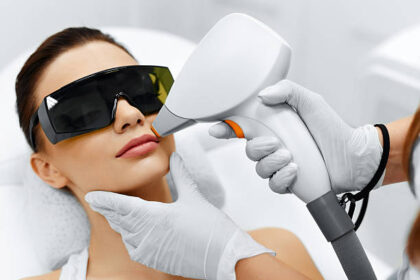Pharmacovigilance plays a critical role in ensuring the safety of medicines and protecting public health. As a vital aspect of healthcare, pharmacovigilance focuses on the detection, assessment, understanding, and prevention of adverse drug reactions (ADRs) and other medication-related problems. With increasing global access to healthcare products, ensuring the safety of drugs has never been more crucial. This blog delves into what pharmacovigilance consulting services are, why they are essential, and how they contribute to improving patient outcomes.
What is Pharmacovigilance?
Pharmacovigilance is the science and activities related to the detection, assessment, understanding, and prevention of adverse effects or any other drug-related problems. Essentially, it involves monitoring the safety of pharmaceutical products once they are marketed and in use by the general public. Unlike clinical trials, which are limited in scope and duration, pharmacovigilance services help in tracking the long-term effects of medications and identifying new, rare, or unexpected side effects.
Why is Pharmacovigilance Important?
-
Ensures Patient Safety
The primary goal of pharmacovigilance is to protect patient safety. By systematically collecting and analyzing data on adverse drug reactions (ADRs), pharmacovigilance services can identify potentially dangerous drugs or side effects. This leads to better-informed decisions on the use of medications and can prevent harm to patients. -
Regulatory Compliance
Regulatory authorities like the FDA (U.S. Food and Drug Administration), EMA (European Medicines Agency), and WHO (World Health Organization) have stringent guidelines for drug safety monitoring. Pharmacovigilance services ensure that pharmaceutical companies comply with these regulations, helping to avoid legal issues and potential sanctions. -
Post-Market Surveillance
Even after a drug has been approved for market use, pharmacovigilance continues to monitor its safety in real-world conditions. Clinical trials, while crucial for approval, may not capture all potential side effects or long-term consequences of a medication. Post-market surveillance fills this gap. -
Improves Drug Quality
Continuous monitoring allows pharmaceutical companies to improve their products by identifying risks early. This might include changing the drug’s formulation, adjusting the dosage, or altering packaging to minimize adverse effects.
Key Services in Pharmacovigilance
Pharmacovigilance is a multi-faceted field that includes a variety of services aimed at ensuring the safety of drugs throughout their lifecycle in ICSR Processing Services . Some of the essential services include:
1. Adverse Drug Reaction (ADR) Reporting
A core function of pharmacovigilance is the collection, analysis, and reporting of ADRs. Healthcare professionals, patients, and drug manufacturers are encouraged to report any adverse reactions. This information is analyzed to detect patterns or signals that may suggest a new risk associated with the drug.
2. Signal Detection and Risk Management
Pharmacovigilance teams analyze collected data to identify “signals”—early indicators of possible drug-related risks. These signals may prompt further investigation or risk management actions. Risk management plans often include steps to minimize or eliminate identified risks.
3. Post-Marketing Surveillance (PMS)
Once a drug is on the market, it’s crucial to monitor its real-world performance. Post-marketing surveillance involves ongoing safety reporting and assessments to evaluate the long-term impact of drugs. This surveillance is essential for detecting rare side effects that were not evident during clinical trials.
4. Safety Data Management
Effective pharmacovigilance services require managing vast amounts of safety data from clinical trials, healthcare settings, and patients. This data must be organized, analyzed, and stored in a way that complies with regulatory requirements. Data management software and systems are often used to streamline this process.
5. Regulatory Reporting and Compliance
Regulatory bodies like the FDA, EMA, and Health Canada require pharmaceutical companies to submit periodic safety update reports (PSURs) and other documentation. Pharmacovigilance services help ensure compliance with these regulations and facilitate the smooth submission of safety data to regulatory authorities.
The Role of Technology in Pharmacovigilance
Advancements in technology have revolutionized the pharmacovigilance landscape. Modern software platforms, artificial intelligence (AI), and machine learning tools are being increasingly integrated to enhance data collection, analysis, and reporting. Here’s how:
-
Automated Data Collection
Modern platforms can automatically collect ADR reports from multiple sources, including hospitals, clinical trials, and social media platforms, making the process more efficient and comprehensive. -
Artificial Intelligence (AI) in Signal Detection
AI and machine learning algorithms are used to identify patterns in vast datasets that may indicate a potential safety concern. These tools can analyze data far faster and more accurately than traditional manual methods, enabling quicker responses to emerging safety issues. -
Data Integration and Analytics
Advanced data integration platforms allow for better tracking of drug safety across global markets. By compiling and analyzing information from various sources, pharmacovigilance services can provide more comprehensive insights into drug safety.
Challenges in Pharmacovigilance
While pharmacovigilance services have come a long way, there are still several challenges in the field:
-
Underreporting of Adverse Drug Reactions
Patients and healthcare providers may not always report ADRs, whether due to lack of awareness, time constraints, or uncertainty about the drug’s role in the reaction. This hampers the ability to detect safety signals early. -
Data Privacy Concerns
With the increasing reliance on patient data, ensuring data privacy and compliance with regulations such as GDPR is essential. Mismanagement of this data could lead to severe consequences, both for patients and pharmaceutical companies. -
Global Variation in Reporting Systems
Different countries have varying pharmacovigilance reporting standards, making it difficult to compare safety data across borders. The lack of standardization can delay signal detection and impact the effectiveness of global pharmacovigilance efforts.
Conclusion
Pharmacovigilance is a cornerstone of modern healthcare, ensuring that medications are used safely and effectively. Through comprehensive monitoring, data collection, and regulatory compliance, pharmacovigilance services help mitigate the risks associated with drug use and protect public health. With the advent of new technologies, the field continues to evolve, allowing for more efficient safety monitoring and faster detection of potential issues. As a result, pharmacovigilance will remain a vital aspect of healthcare, ensuring that patients can trust the medications they rely on for their well-being.
Whether you’re a pharmaceutical company, healthcare provider, or patient, it’s crucial to understand and support pharmacovigilance efforts—because ensuring the safety of drugs is a responsibility we all share.

